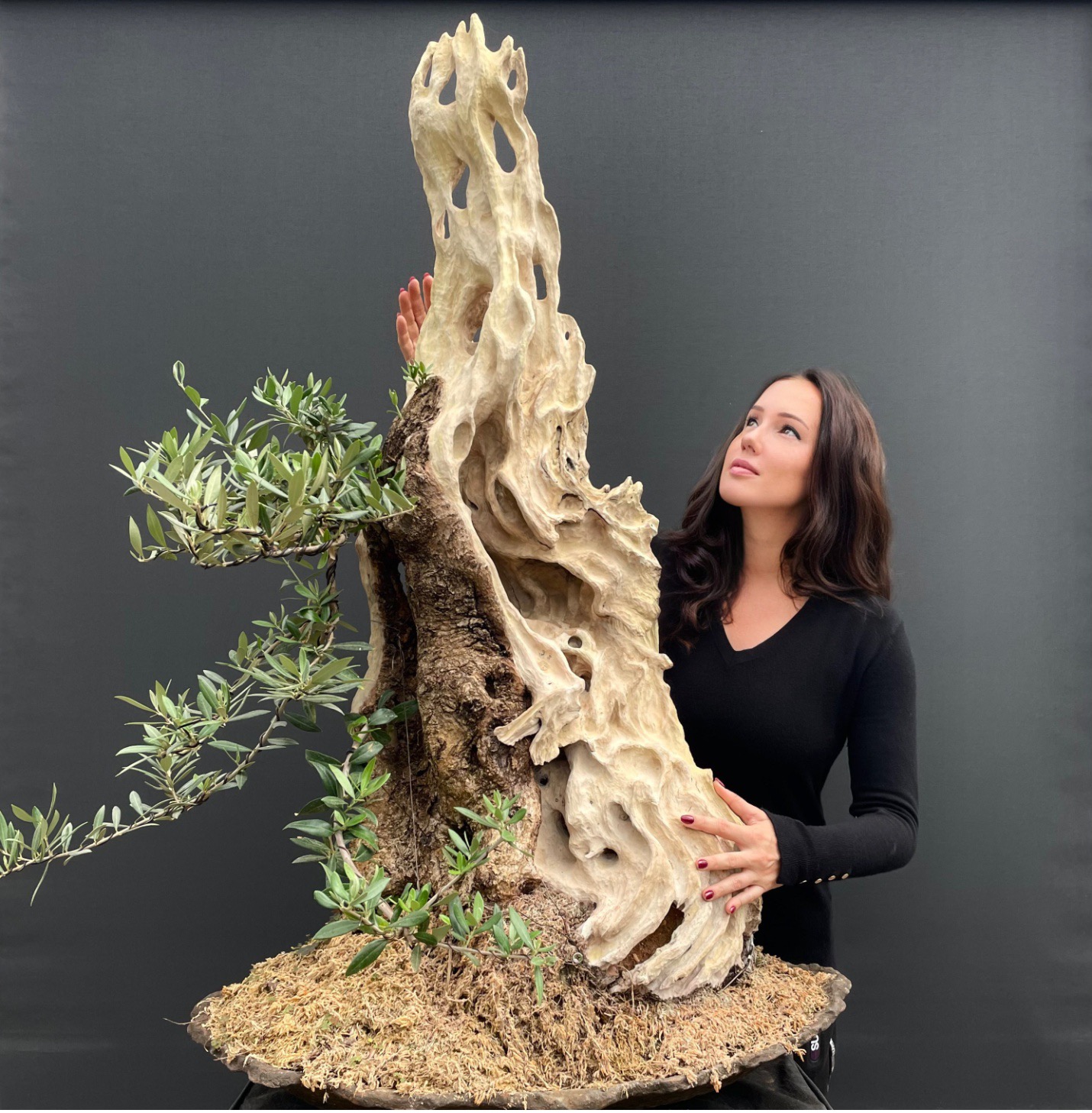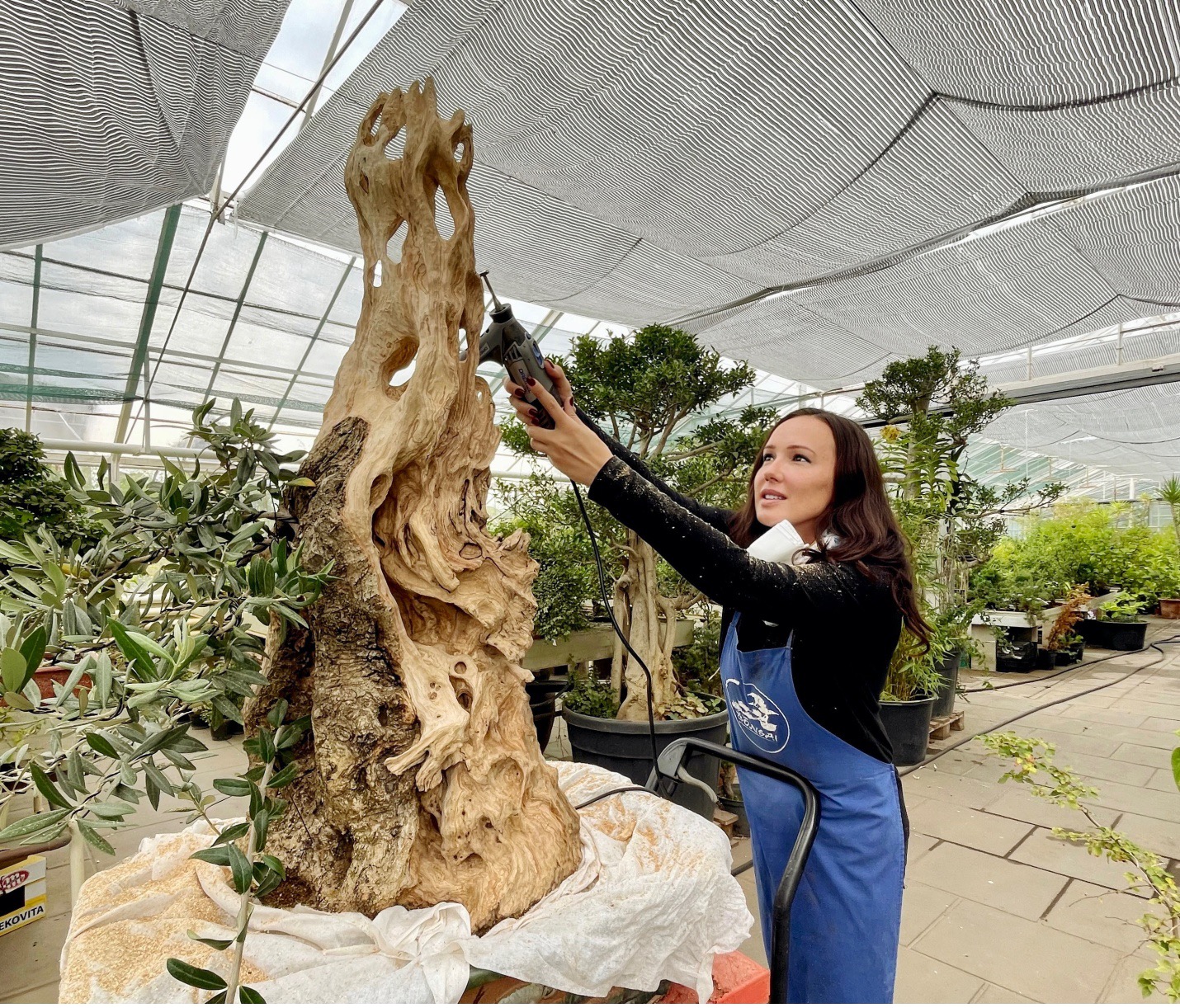
Dr. Kasia Sterriker is a renowned European environmental artist whose breathtaking sculptures have attracted the attention of viewers around the world. Her unique approach to environmental art has been shaped by her use of bonsai techniques, leading her to develop living sculptures that dramatically challenge people’s perceptions of the natural world.
Environmental art has long been a way for artists to engage with the natural world and bring attention to important issues related to the environment. In Europe, this type of art has often focused on interpreting nature and proposing ways for humans to coexist with it rather than simply reclaiming and remediating damaged environments, as is often seen in American environmental art. One European artist who has made a name for herself in this realm is Dr. Kasia Sterriker, known for her environmental art and biophilic designs that incorporate Bonsai techniques to create living sculptures that challenge the viewer’s perception of the environment.
Dr. Kasia’s organic art-pieces are created using Bonsai techniques, a form of horticultural art in which trees or shrubs are grown in containers and trained to stay small through pruning and shaping. These techniques allow Dr. Kasia to manipulate the growth of the plants in her pieces, creating forms and shapes that would not be possible in nature. She then uses extreme aging and carving techniques to create a unique element to these living trees, adding a modern twist and transforming them into a new genre of organic art. However, what truly sets her work apart is the fact that her sculptures are not intended to be viewed at a human scale. Instead, they are either larger or smaller than expected, creating a contrast with the viewer’s expectations and altering their perception of the environment.
Dr. Kasia work invites viewers to re-build their relationship with nature that is often lost in ever increasingly urban environments in which we live by bringing her beautiful living representations of nature into the homes of those people fortunate enough to own them. Her art prompts the experience and appreciation of art and nature, encouraging a deeper understanding and connection to the environment. As such, Dr. Kasia’s work represents a unique and thought-provoking contribution to the field of environmental art.

In addition to Bonsai Art, Dr. Kasia is also known for her biophilic designs, which incorporate elementsof nature into the built environment in order to improve the well-being and quality of life of the people who inhabit it. This approach to design recognizes the deep connection humans have with nature and seeks to bring the outdoors indoors rather than shutting it out.
As an artist and scientist her work and unique knowledge straddles the boundaries between art, horticulture, craft, and science. Dr. Kasia seeks to redefine the connection between humankind and nature. She considers not only the physical compositions and environmental factors needed to ensure the survival of her living sculptures but also the origin of the materials she uses, including their geography, topography, culture, and history.
One example of Dr. Kasia’s innovative approach to environmental art is her recent work focused on trees native to the Middle East. By taking the far eastern arts of landscape miniaturization and applying them to trees that hold significant religious and cultural meaning in the region, she is able to engage with and transform a whole new media while paying respectful homage to the history and culture of the area. These artworks allow people to reconnect with these important and holy trees in a new way by bringing them into their homes and gardens in the form of art that draws attention to their significance both within and outside of their native lands.
The world needs more people like Dr. Kasia Sterriker, whose passion for bridging the gap between humankind and nature through her breathtaking environmental art is awe-inspiring. She has taken what she inherited from her father, who is a bonsai master, paired it with the invaluable support of her husband, and set forth to create art that celebrates the beauty of the natural world. Her vision of creating a series environmental art gallery across the globe is one that will surely bring us all closer to the magnificence of nature and, just as importantly, remind us of our responsibility to protect our treasured planet.
Advertising disclosure: We may receive compensation for some of the links in our stories. Thank you for supporting LA Weekly and our advertisers.
